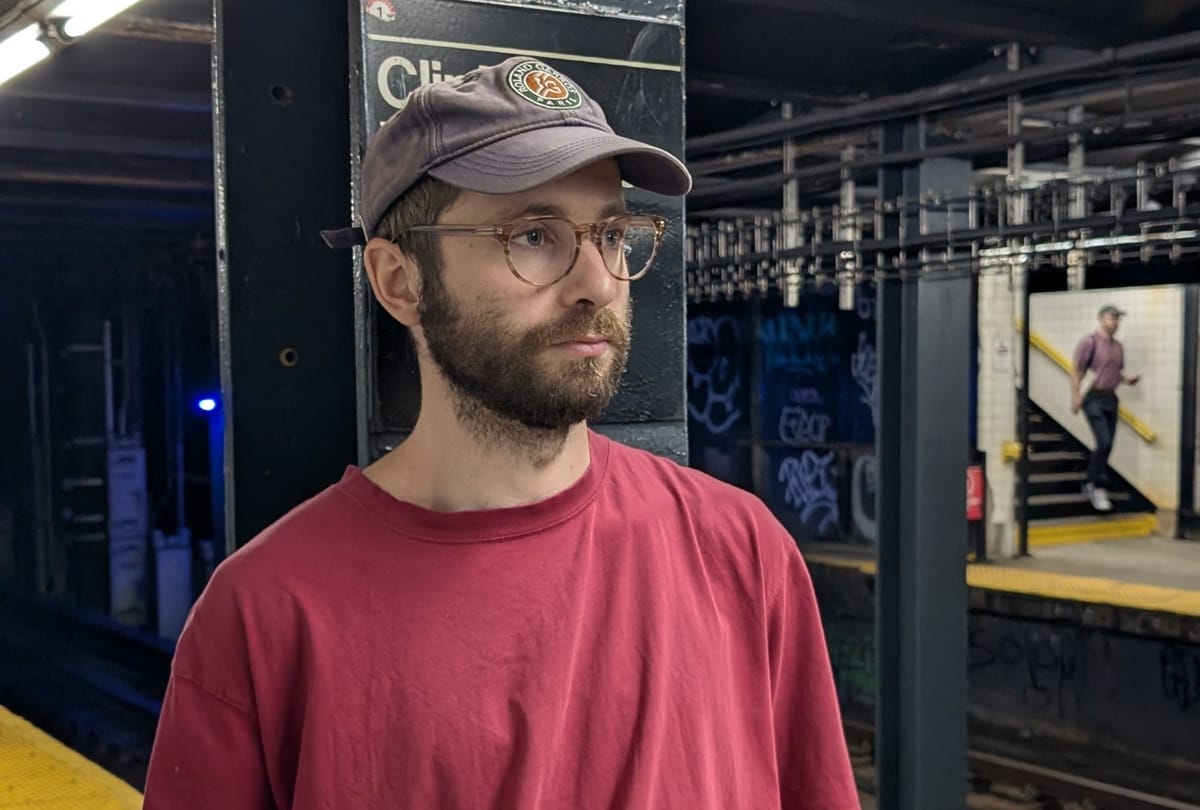At 181st street in New York’s Washington Heights neighborhood, an August heat wave broils the asphalt, concrete, and any inch of skin exposed to the sun. Shade offers some relief, with one major exception: the underground. Washington Heights resides several hundred feet above lower Manhattan, so its subway stops are buried deeper underground. “People tell me, you’ve gotta go to the elevator inside 181st, it’s an inferno,” said Jack Klein, founder of NewYorkLab, a guerilla project to study environmental conditions at subway stations.
On hot days, the elevator is a sump for heat from the ambient air, train tracks, and air conditioning exhausts — AC units installed in the traincars that roar heat into the station. The 181st Street subway stop is one of three in the city that you can only access by elevator, and riding one of those feels like you’re on an elevator to hell.
The 181st street elevators were renovated recently but not with fast-climbing temperatures in mind. Extreme heat kills at least 500 New Yorkers every year, according to government data. Both aging and medications like antidepressants disrupt thermoregulation in people who take them regularly, making certain demographics particularly vulnerable to extreme summer temperatures. Of 44 recent heat deaths with detailed location records, one occurred on a subway platform.
He moved to Queens last year and first noticed the scorching temperature on his commute into Midtown Manhattan. I met Klein near a subway station in Brooklyn, where he now lives. “I don't have an engineering background, so I'm asking these questions in a naive way,” said Klein, a young software developer with a scruffy beard, glasses, and French Open tennis cap.
Virtually all the subway cars are air conditioned, the heat extracted from the cars still has to go somewhere. The answer: The cars expel it onto the platform. Meanwhile, friction from subway brakes on metal rails also piles on the heat underground.
“I had a thought one day: 'Why don't I just get a digital thermometer gun, and start just pointing it at surfaces in the train stations, and recording myself doing it,'” Klein recalled. “A lot of people from New York expressed their shared frustration.” A couple viral TikToks later, the response ignited his curiosity to collect data more systematically.
“No one has ever collected long-term microclimate data in New York City subway stations,” he said in his measured tone tone as we stood on the platform.
"We're trying to frame it as a public health issue rather than something you put up with as a New Yorker"
Throughout the summer, Klein visited Manhattan’s oldest and most highly trafficked stations and glued magnets to sensors of heat index (a product of heat and humidity) and stuck them to vertical beams at human height. (He also collects particulate matter readings for air quality.) Klein’s videos and advocacy led to conversations with council members and companies investing in weather tech who may want to report conditions along people’s commutes. He is scheduled to speak on a panel at New York City’s Climate Week in September.
It’s essentially a public health crisis, Klein told me. We spoke about how he intends to use the unprecedented microclimate data, and how NewYorkLab may help temper the issue. The following transcript was lightly edited and condensed for clarity.

What’s fueling your confidence that this problem will be addressed?
I’m fascinated by how the conditions can seem so terrible in the largest subway system in the country.
This is a problem that’s not going to go away. First, we're trying to frame it as a public health issue rather than something you put up with as a New Yorker. Second, while this is a temporal issue that people will soon forget about until next summer, it will 100% return and continue to get worse due to global warming.
How do you collect the data?
I've spent a lot of time in the subway stations for many months, taking spot readings, trying to figure out the best places to install the sensors, and making sure I'm collecting high-fidelity data.
I glued magnets onto the back of these sensors and put tape over them so they blend with the vertical beams. The sensors face the platforms, about four to eight feet off the ground. I’m really trying to find a place that would emulate what it feels like for a commuter to stand waiting for the train. Then I go back to the station and download the data with Bluetooth. Ultimately, I would like to widen this research, but I think the data we've collected so far has been able to prove a point.
What’s that point?
Everyone knows it's hot. But there's never been long-term data collection within the subway stations. There's a lot of open data sets from the state of New York that track things like turnstile usage in subway stations. There's nothing on heat and humidity within subway stations, or even flooding, or other environmental stressors. I think to push for any change or solution, it's necessary to have some base level dataset.
What kinds of solutions are out there to deal with the underground heat?
Look at the train stations in China, Singapore, and Hong Kong. When the train pulls up, screen doors open and close so it’s a climate controlled system. Even in some of the newer train stations in New York, like 34th Street–Hudson Yards that was built in 2015, there is some cooling technology.
What we're pushing for now as an organization is to get a pilot program where we can test out solutions on even just one station. In the videos that I post, oftentimes people say why we can't pump AC in? Ultimately, while it'd be nice, I don't think it's a realistic solution. That would require us to put up screen doors in the stations and have closed environments that cost a lot.
We should be focusing on adaptable, realistic solutions. So more places to sit, and also more strategically placed fans.
There's currently no water stations in any of the train stations that I've been to and there's very few benches. This is a public health hazard for a lot of different populations. It feels like you're in a jungle underground — the humidity is very high, like 50 or 60%. A large reason for that humidity is really poor ventilation.
Have you also thought of new ways to use the data you collect?
I would love to feed a predictive model that could estimate what it's going to feel like underground based on what it feels like outside. What time is it the hottest down there? How long does it take to cool off? How long does it take to heat up? We've been trying to pitch to some companies with very popular weather apps.
"We should be focusing on adaptable, realistic solutions. So more places to sit, and also more strategically placed fans."
I imagine this is maybe even a bigger issue for people who actually work for MTA underground.
The construction workers and these private security guards standing just beyond the turnstiles are working down there for eight hours a day. A lot of these stations are so old. We’re measuring in Times Square, 42nd street, Union Square, but they're built in like 1905 and not really with ventilation in mind. And they don’t only expel heat. A lot of dust and trash gets chopped up and pulverized into the air as well.
I actually first learned about your work while scrolling social media. I’ve seen you gain a larger following since then, but any city or transit related content can get divisive. What kinds of reactions do you get?
Very polarized. A lot of people say thank you for doing this research, it's about time that this changed. Other people tell me to get out of New York, commenting on my looks or calling me a fucking idiot.
People love to hate online. I imagine the response you get in real life is much less toxic.
Yes and still the videos have been a really good way to reach people. They make people realize how seemingly terrible and unsafe the conditions are, especially for more vulnerable populations, like the elderly, disabled, pregnant people, people with POTS, and people on antidepressant medications. Last year it was just a creative project, and now it's a much more serious undertaking.
It seems that your videos generated interest in a lot of people who want to help or partner with you. Are you surprised that your online presence has helped evolve your project this way?
That’s been an absolutely critical piece of this work. It feels insane to me that to even start having conversations about solutions for this monumentally large problem, someone like us had to run a very aggressive social media campaign with a mix of luck and skill. At the cost of having a crippling Instagram addiction, I've been able to have conversations with cool people.
Ultimately, people want this. This is an important issue for every New Yorker that rides the train. There's a reason that things have stayed the way that they have, but I feel confident about piloting some type of program in one station. I think we can make at least that happen.





